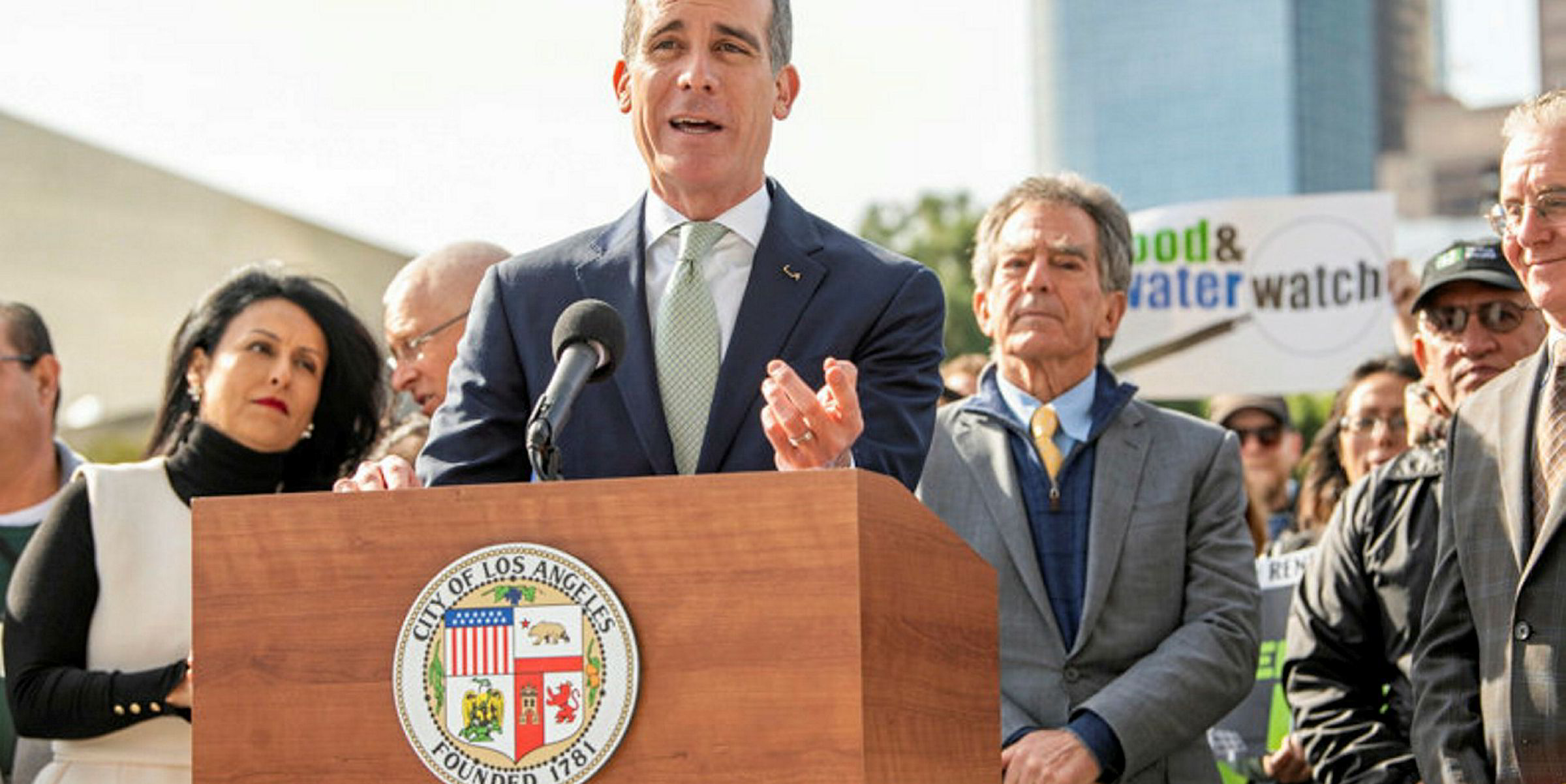Mayor Eric Garcetti has sounded the death knell for natural gas in Los Angeles, directing the municipal utility to scrap a $5bn plan to rebuild three power plants and replace their supply with renewable energy.
“This is the beginning of the end of natural gas in Los Angeles,” he announced, adding the climate crisis demands that the nation’s second largest city move more quickly to end dependence on fossil fuels. “This is a huge step in our commitment to zero emissions.”
Plans call for phasing out the Scattergood facility in 2024, and the other two, Harbor and Haynes in 2029. They will continue providing the city with power until then.
The earlier plan to extend their operation until 2045 was to meet requirements of a 2010 California law that requires power plants located on the Pacific coast to stop using ocean water for cooling because it kills marine life. The upgraded units would have been air-cooled.
Garcetti said the three plants comprise about 38% of the natural gas mix at the Los Angeles Department of Water and Power (LADWP), the nation’s largest municipal utility serving more than 4 million residents.
The balance comes from a fourth plant the utility owns and operates called Valley located away from the coast and imports. The four provide 3,319MW of 7,905MW of “net dependable” nameplate power capacity at LADWP, according to a spokeswoman.
Most recent data in 2017 shows LADWP utilised natural gas for 31% of its energy mix and 18% coal. This electricity is imported from Nevada from a plant due to close by 2025, when the utility plans to eliminate coal.
While calling the move to shutter the gas plants “historic,” Garcetti admitted the city will need additional time to “wean” itself fully off natural gas. Los Angeles’ goal is to become carbon neutral by 2050.
LADWP has teamed with the National Renewable Energy Laboratory (NREL) to determine a “feasible” path to replacing fossil fuels.
LADWP will also allocate financial resources to explore innovative alternatives — including public-private partnerships, new and upgraded transmission and distribution systems, microgrid technologies, and enhanced energy storage projects over the coming years.
“We’re focusing our energies to make sure we have 100-percent renewable energy, and a reliable and affordable grid for the future,” said Garcetti, in apparent reference to business groups that worry that transitioning from baseload natural gas will be prohibitively expensive and risky.
To replace the three gas-fed plants, the Sierra Club, a leading national environmental group, is proposing among other things, “few hundred miles of new or expanded transmission lines, about 2GW of new storage and a couple gigawatts of clean energy …” It did not provide a cost estimate to achieve this plan.


